7 Exercises Guaranteed To Build Muscle!
Do These Every Week!
Let me start off this video by asking YOU a question. How many exercises, not including abs, are in your workout program right now? If the answer is more than 20, then chances are you’re spending waaaaay to much time in the gym! Let me tell you a secret, you can usually tell when a program or trainer is garbage when they overload you with exercises. It’s like a camouflage to make you think they’re super smart when in reality they don’t know anything about program building. So, if your trainer currently has you on a program that doesn’t involve the majority of these 7 exercises, it’s time to find a new trainer, OR maybe it’s about time you downloaded my app MuscularStrength and started using a program from someone you trust.
#1 – The Squat
You all knew this was coming so I figured let’s talk about it right from the start! The squat is the KING of lower body exercises. That’s because it’s an amazing compound movement that will help you build A TON of muscle in your lower body, while also strengthening various upper body muscles such as your lower back, your upper back and your core.
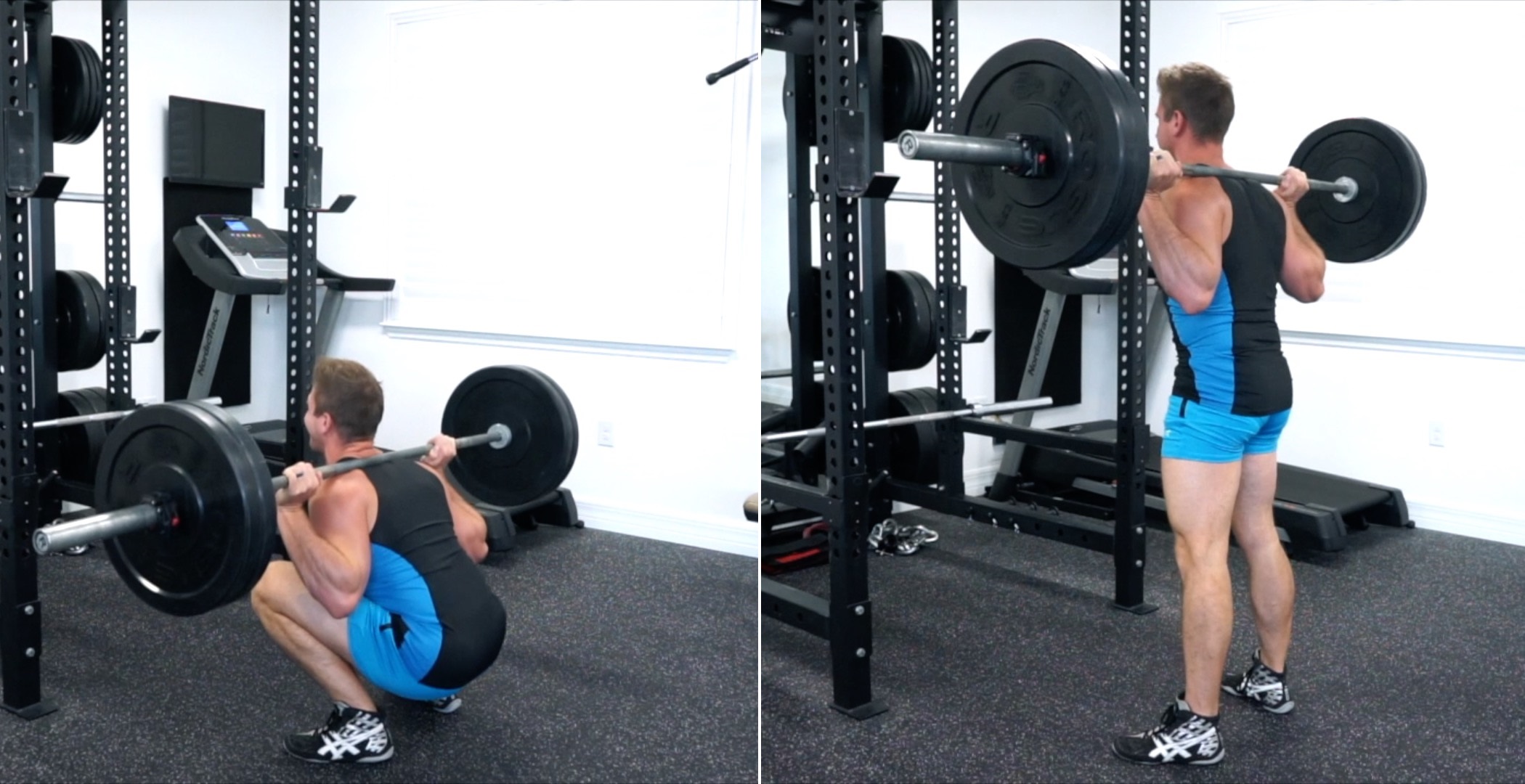
So which squat variation is best? high-bar or low-bar? Well, ANY variation will work. Just pick the variation that best suits your body type. If you train for the movement, anyone can do either variation. But for me personally, I’m about average height at 5’10” and my arms and legs aren’t freakishly long, so the standard high-bar back squat works for me.
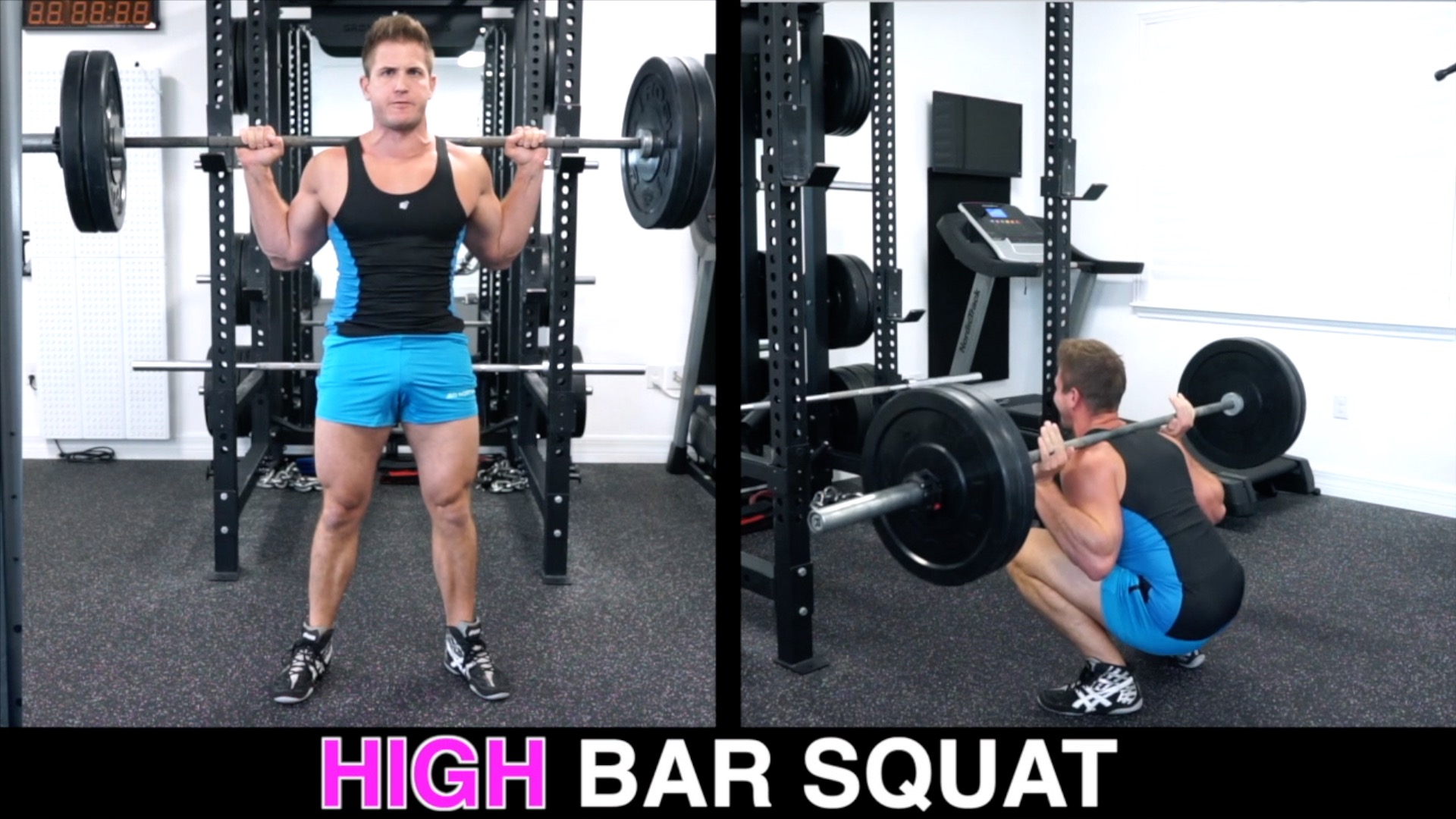
But if you want to get into “reasons” for choosing high-bar or low-bar this is what you should keep in mind. High-bar squatting involves going a lot lower than low-bar and because of this you can recruit a bit more glutes and hamstrings into the movement. It’s not an insane amount of additional activation, but enough to take notice.
Now if your goal is lifting as much weight as possible, or powerlifting, most people tend to lean toward low-bar squatting because when you drop the bar a little lower on your back, you effectively decrease how long the lever of your torso is for the exercise. This results in reducing the overall range of motion and most people can squat 5 – 10% more weight as well.
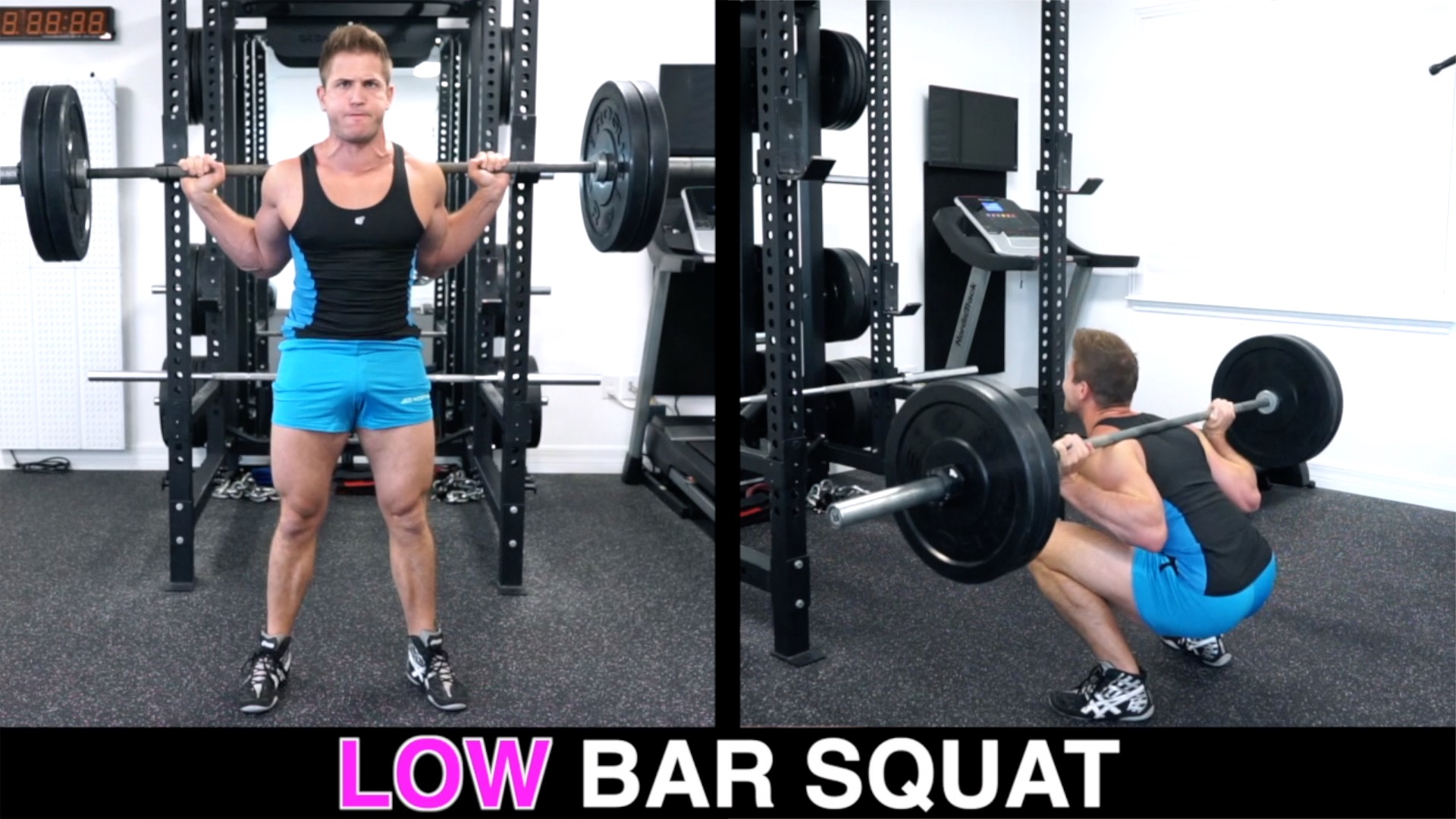
One last thing to keep in mind is that the low-bar squat involves more hip flexion and the high-bar involves more knee flexion. So, what this basically means is that if you suffer from lower back pain, high-bar would be a better option and if you have trouble with your knees then you should lean towards low-bar. But at the end of the day I don’t care which variation you choose, just make sure you hit it twice a week so you don’t look like THIS!
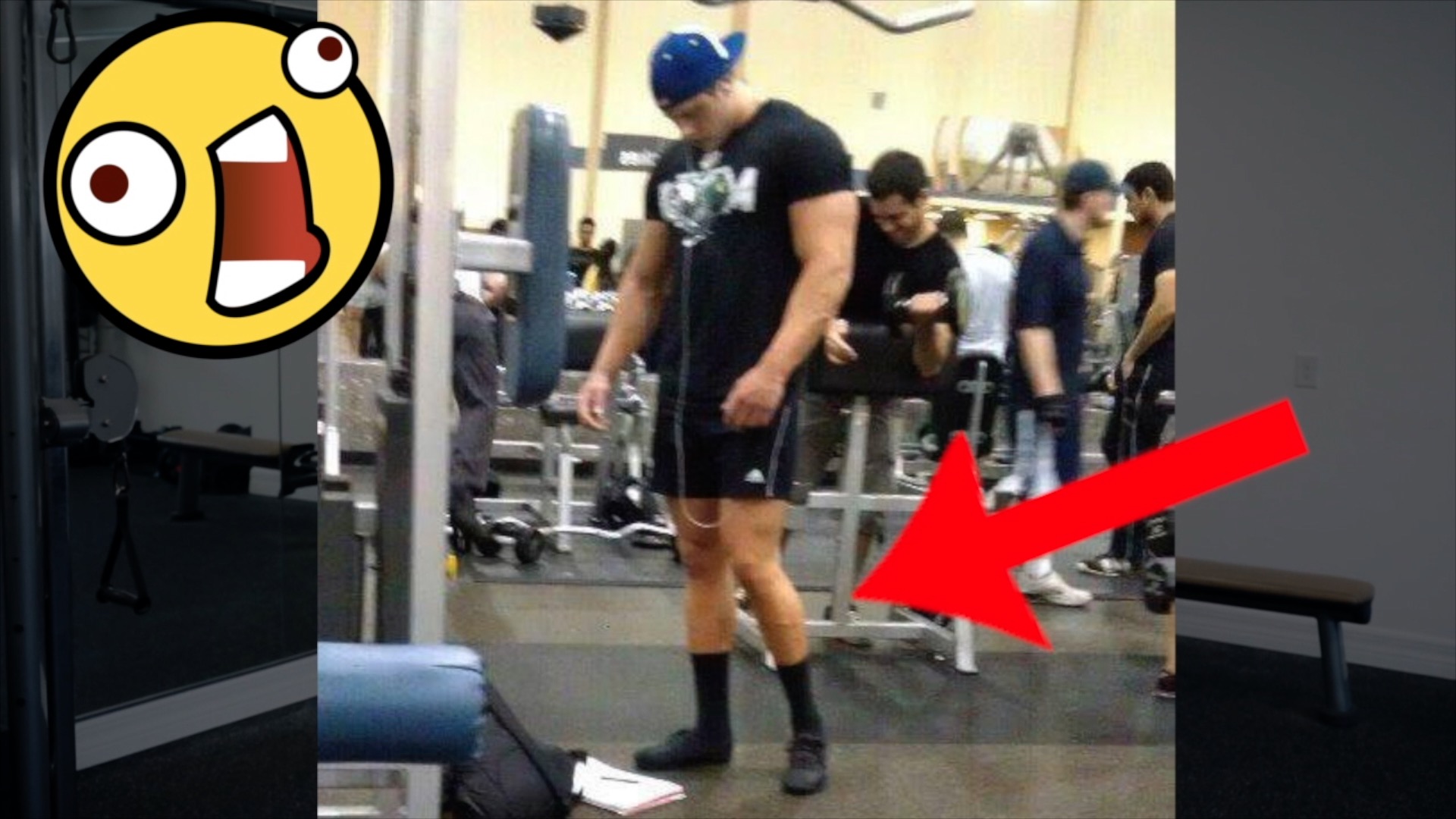
#2 – The Deadlift
While the squat is the king of lower body exercises, the Deadlift is just KING! You NEED to be doing some sort of deadlifting. Period! Even if you have some kind of lower back, spine or knee injury, there are still ways you can perform deadlifts without risking further injury. If you have access to a trap bar, that would be the easiest way to be in the most advantageous position to lift as heavy as you can while avoiding any potential injury. But if not, you can choose between conventional or sumo.

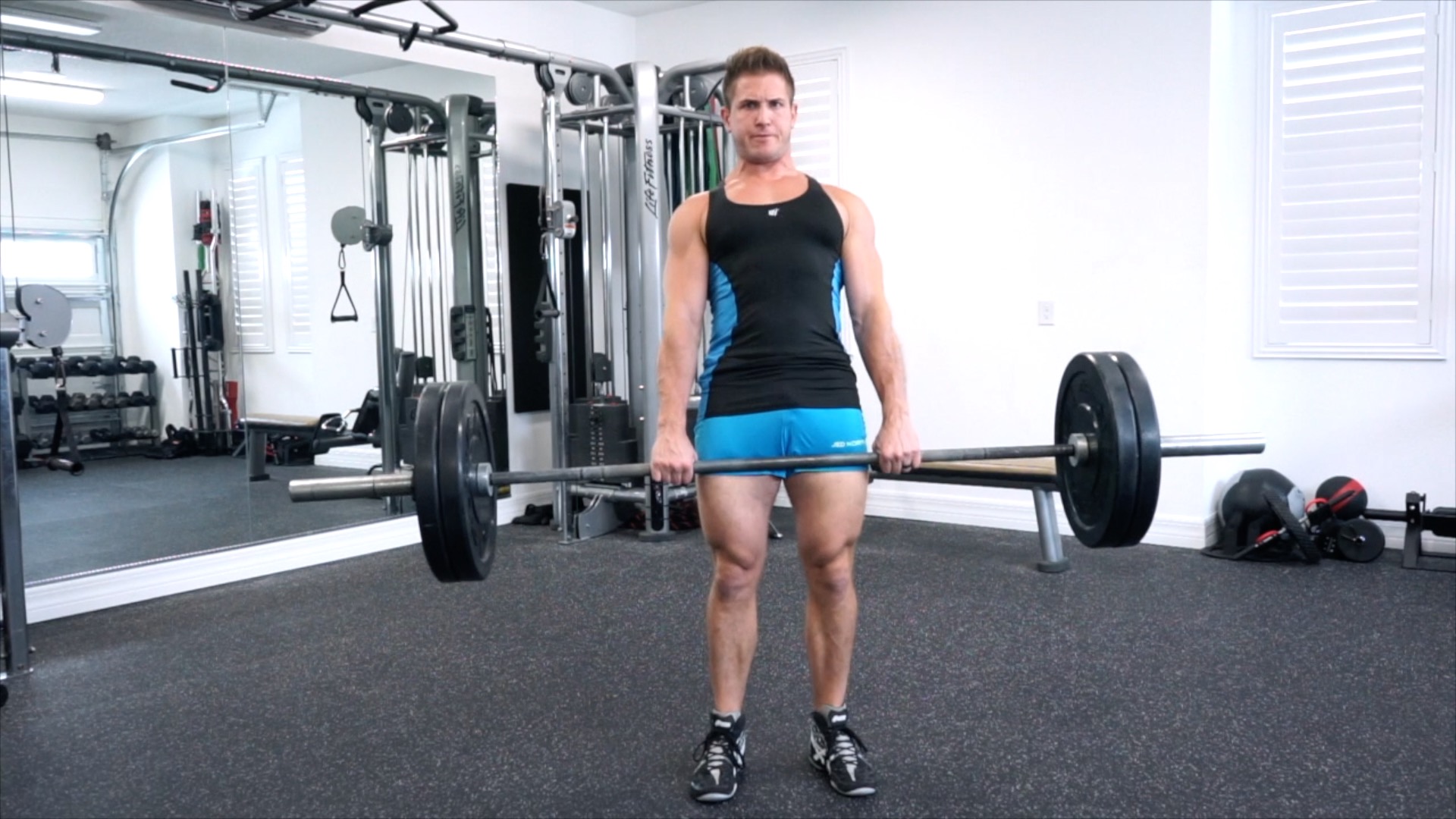
Now I have seen people lift super heavy with either variation, so it really comes down to personal preference and bio mechanics. In fact, most powerlifters will train with both variations to help with building their overall strength on the movement. But which variation is right for you?
Well, if you’re an exceptionally tall person with long arms and legs (unlike me) then maybe you should start with the sumo deadlift. This is because the sumo deadlift will be more comfortable for YOUR body type due to the more upright position it places you in. The sumo deadlift is also great for those of you with lower back or hip injuries because it will involve less of your lower back and more of your glutes and hamstrings. The wider foot stance also takes most of the stress OFF your lower back and helps open up your hips at the same time.
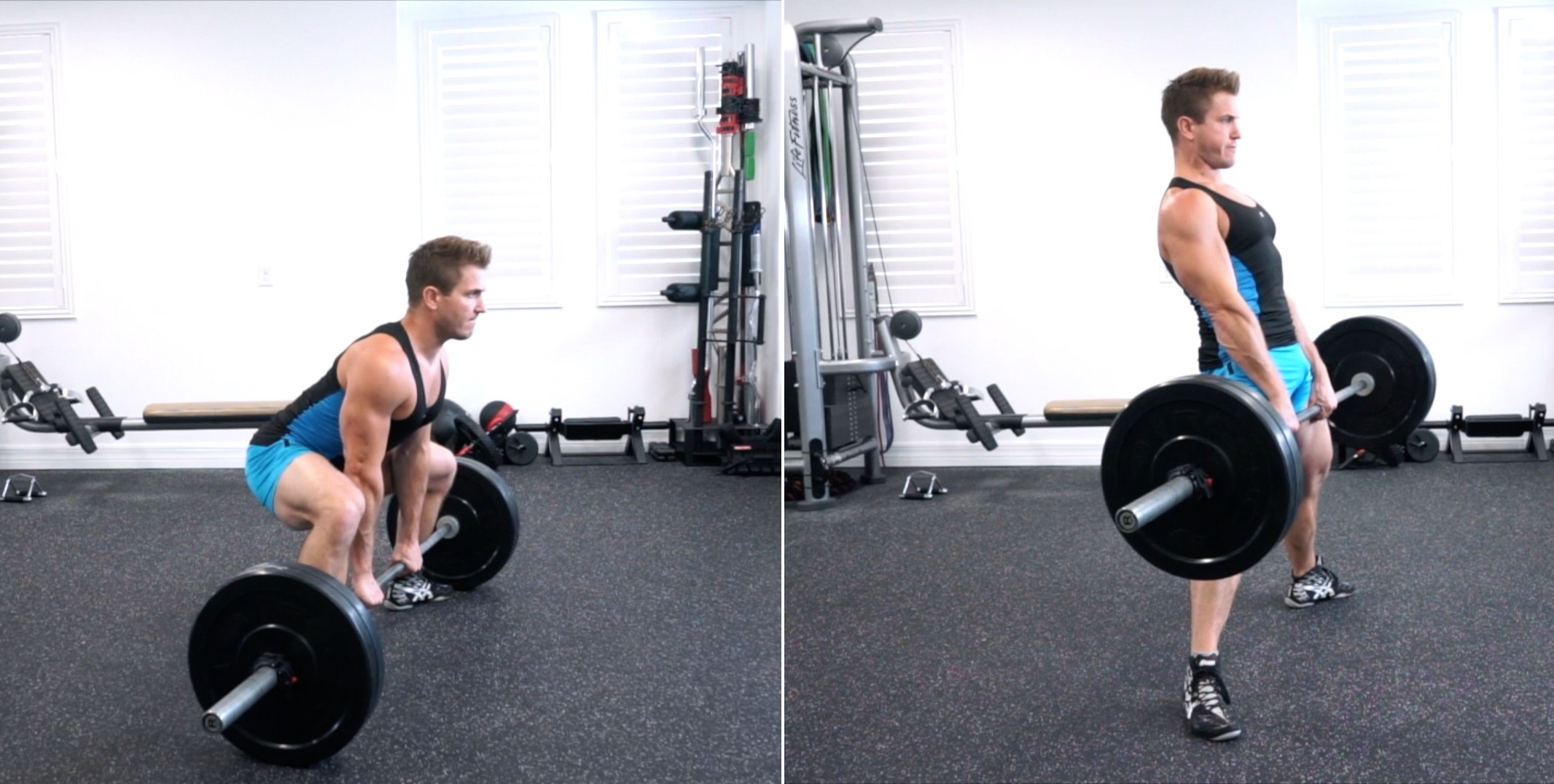
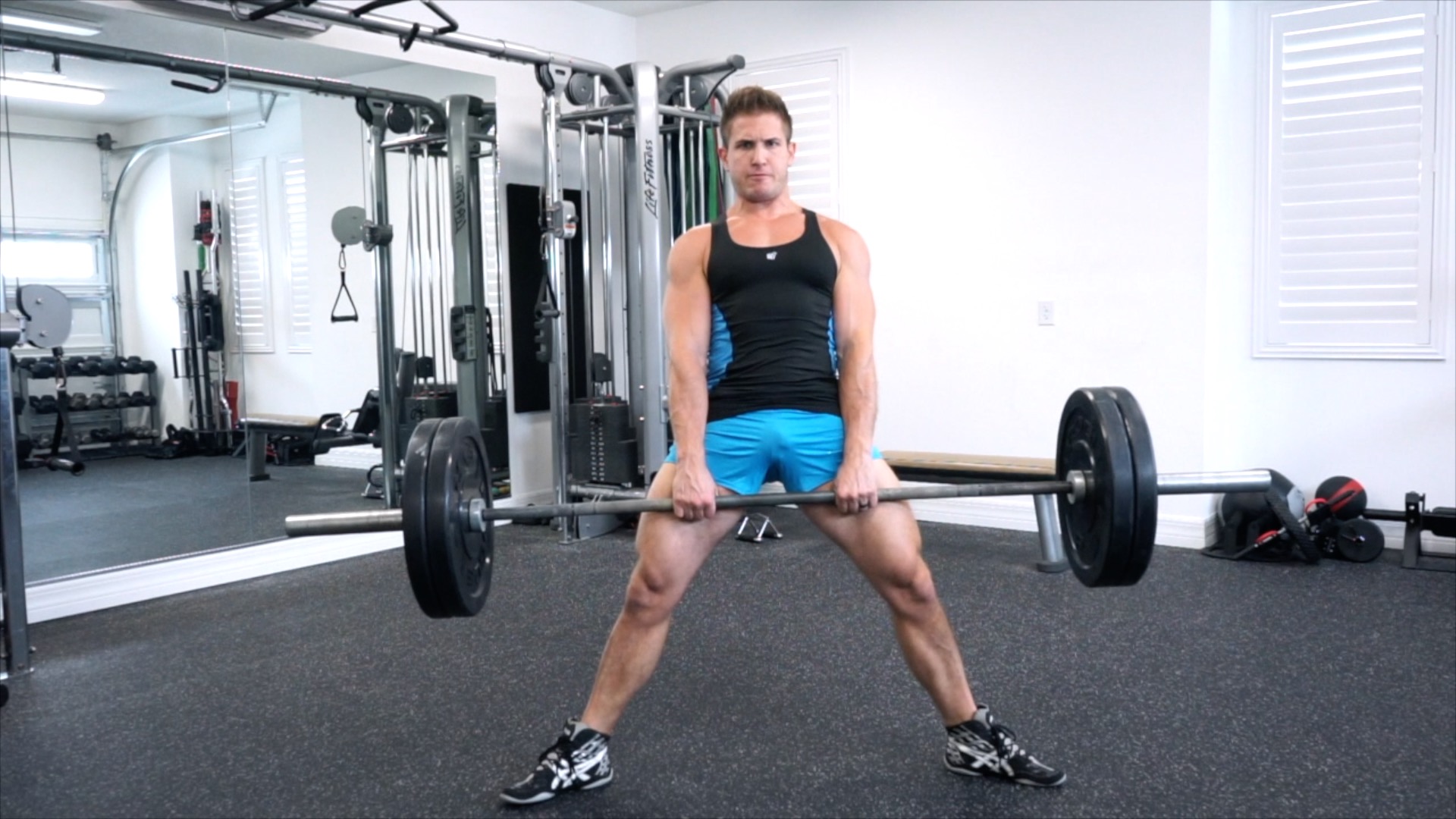
The other variation is the conventional deadlift, which is my favorite. But this variation requires a bit more overall flexibility in your spine and ankles in order to properly lower yourself to the starting position and keep your chest up as you perform the lift.
But regardless of the variation you choose, the deadlift will help you put on muscle all over your body and most importantly will build the foundations of strength that will serve you well throughout your entire fitness journey! If you would like to learn more, check out THIS ARTICLE comparing the sumo vs conventional deadlift. It will answer any additional questions you might have!
#3 – The Modified Incline Dumbbell Bench Press
The 3rd exercise that you NEED to be doing regularly is the “modified” incline DB bench press. Just don’t be dumb and use 45lbs plates!
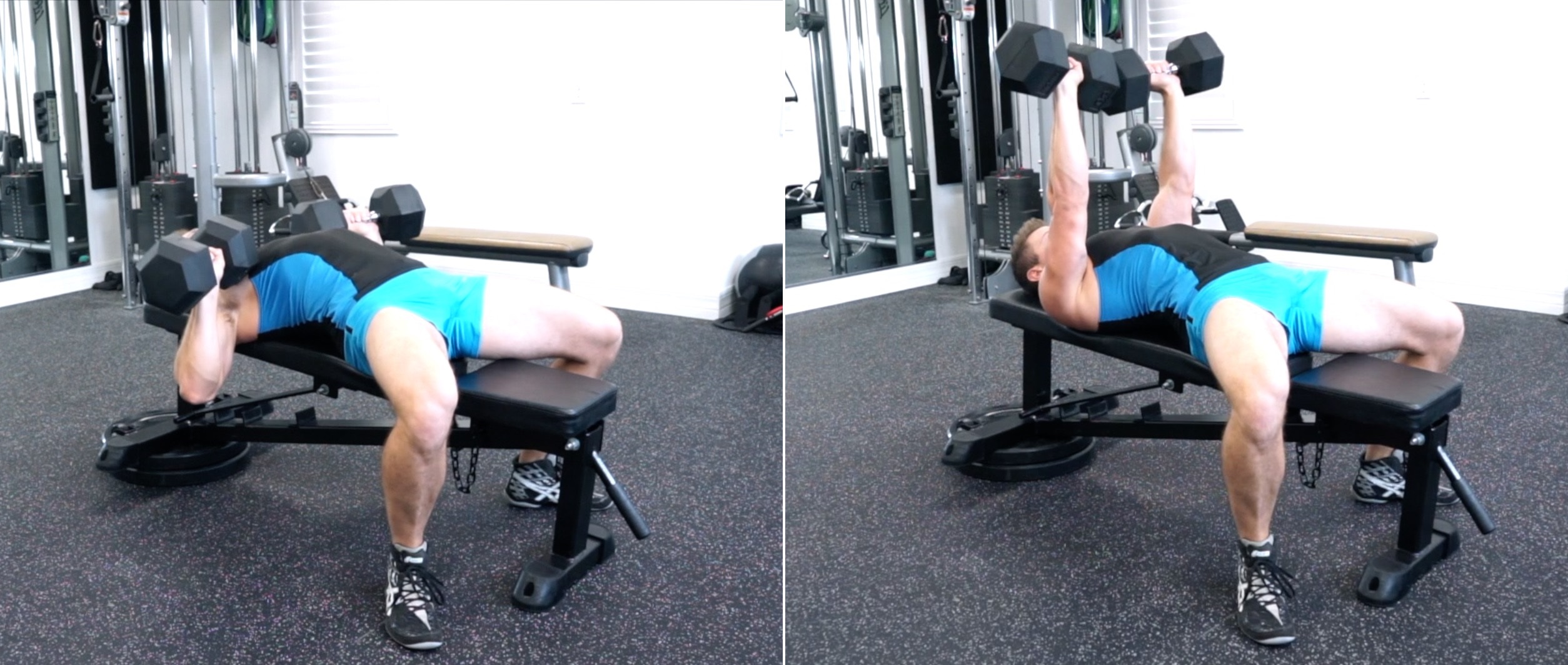
So we’ve actually covered this before in THIS VIDEO. Instead of hitting 3 sets of FLAT and then 3 sets of INCLINE, you can get the best of both worlds by performing a modified variation of the incline bench where you simply stack two 45lbs plates under the bench.
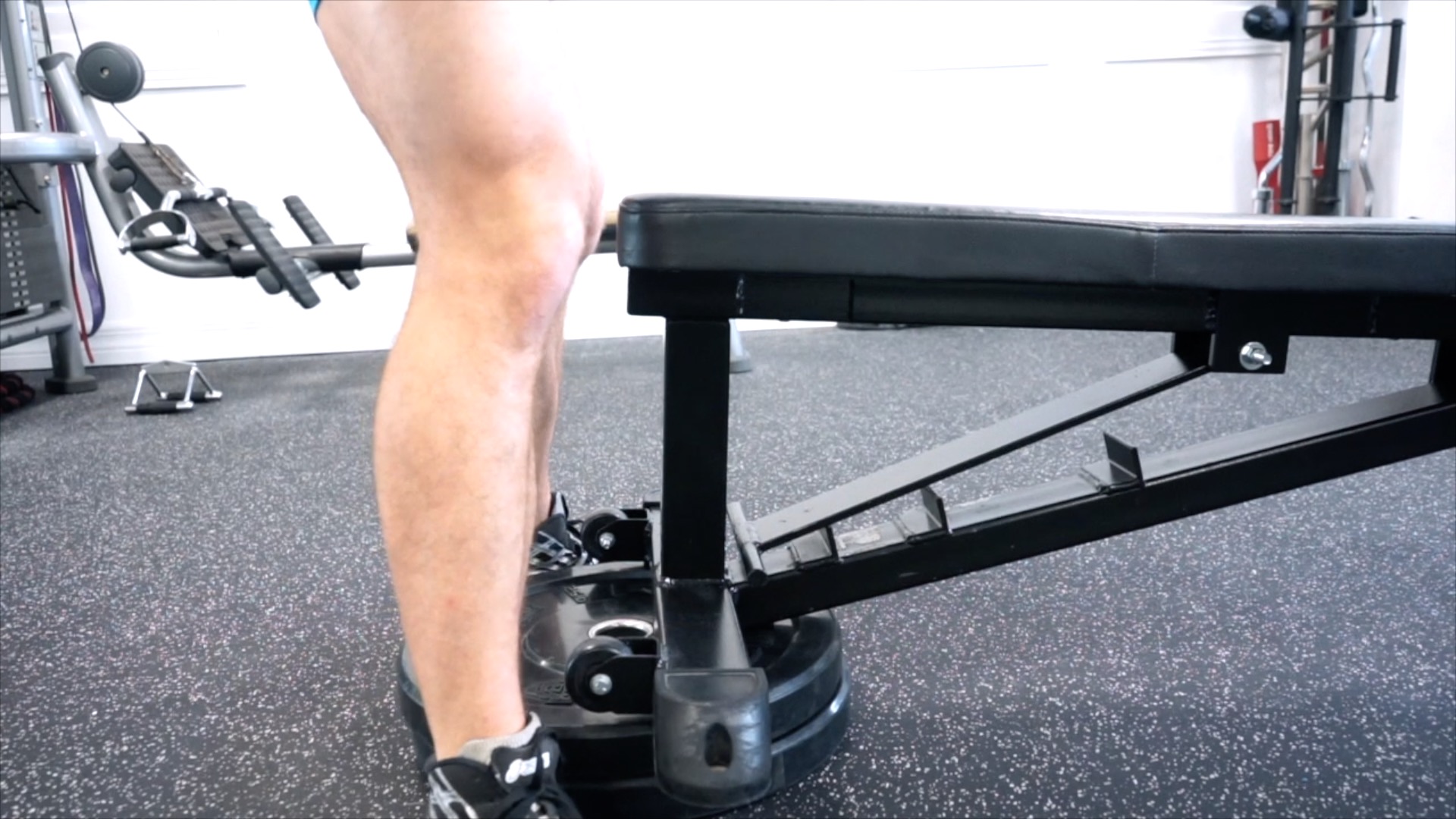
This gives you more of a 10 – 15 degree incline and this angle will allow you to target the entire pectoralis major without bringing in too much delt activation like when incline benching or too much triceps activation when flat benching. You will still obviously activate your delts and triceps, but as you will quickly find out your overall chest activation each set will be greater.
You can apply this technique to barbell or dumbbell benching and for those of you who experience shoulder pain, this variation should help you lift pain free.
#4 – The Close Grip Bench Press
No, not rope pushdowns, not dumbbell kickbacks. To grow your triceps you need an exercise you can actually lift heavy weight with. Dips are also a great option, but lying flat on a bench provides more shoulder stability and places you in an advantageous position to press more weight, especially if you’re not strong enough to perform even a bodyweight dip. Also, because your elbows are tucked in toward your torso, this forces the triceps to do all the work while simultaneously placing less pressure on your shoulder joints.
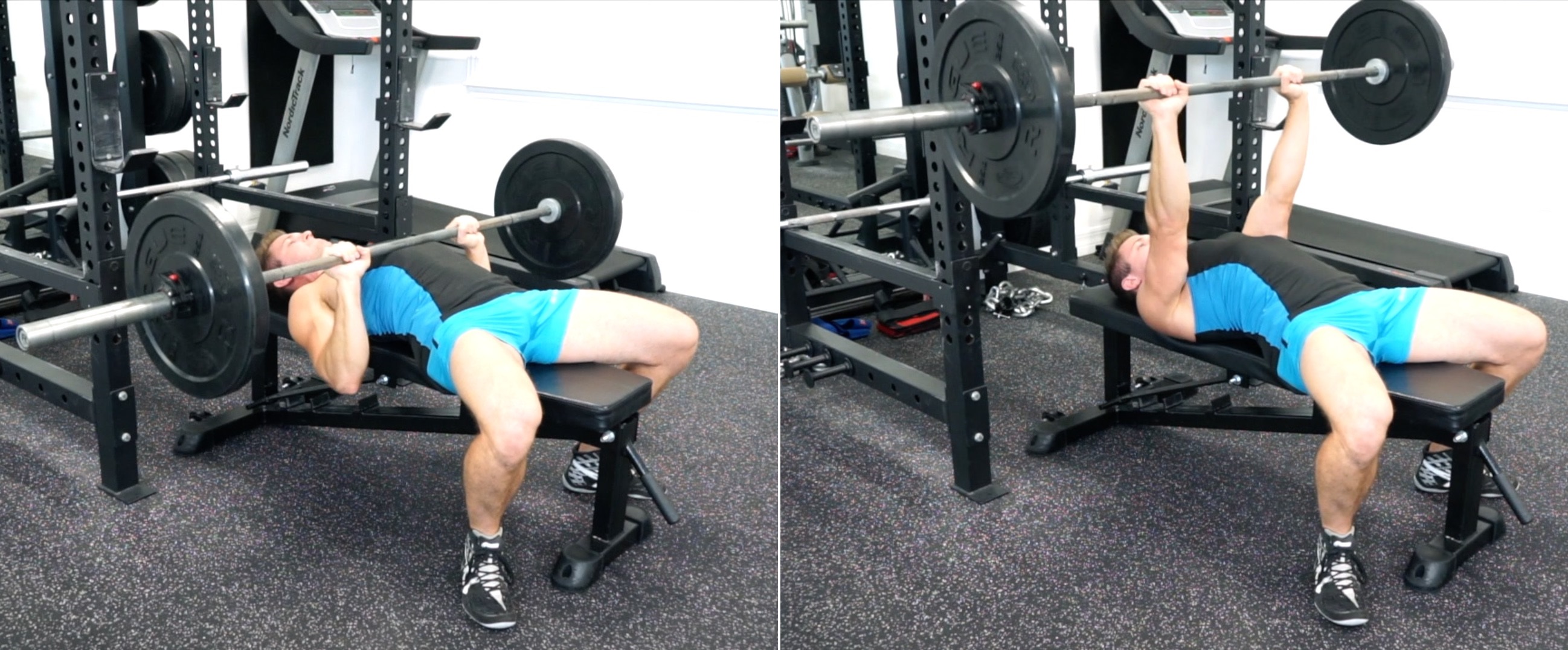
Now you CAN perform this movement with dumbbells, but in my opinion it’s much more of a hassle, you definitely won’t be able to lift as much weight and to be honest, 9 times out of 10 the people I see using dumbbells are doing it wrong because they can’t keep their elbows tucked in and end up just bench pressing instead.
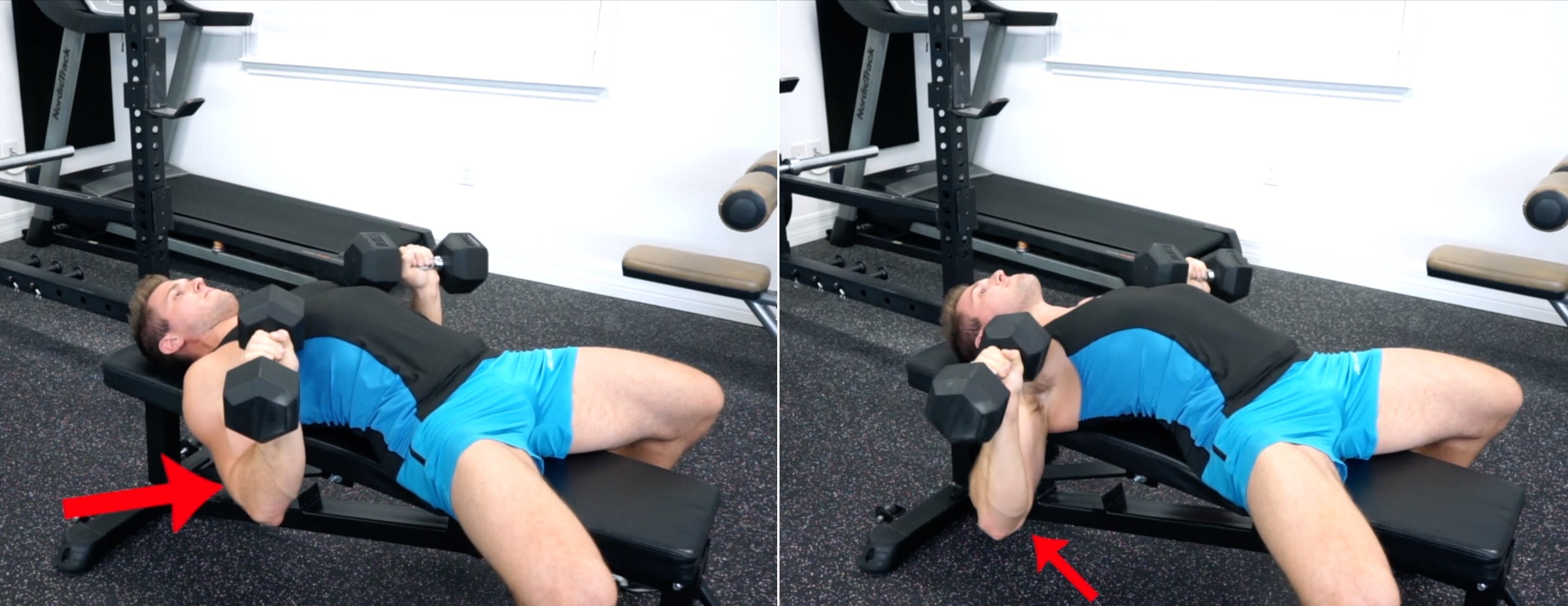
#5 – The Pull-Up
Now I’m sure many of you knew this exercise was coming. But that’s a GOOD THING! There’s no need to reinvent the wheel when it comes to fitness. The pull-up CLEARLY works and there is no reason why you shouldn’t be doing it. Now the main reason why the pull-up is a MUST-DO exercise is because it’s a bodyweight movement that forces you to move through space and time…contrary to something like the lat pulldown where your body is stationary and only your arms are moving. The difference is the instability created by the pull-up leads to MORE muscle engagement throughout your entire back as well as your biceps.

But what if you currently CAN’T do a single pull-up? Should you avoid it?Is there an alternative? Well let’s not think like that! You just have to build up to it. Even my women clients can perform 4 – 8 pull-ups after a year of gym training, so trust me, you can too! You just need to know a few tricks to help you get started and as you may have guessed, I have an article HERE that will help you with that!
#6 – The Ab Pulldown
If you want great abs then you MUST train them for hypertrophy. Crunches, planks and leg lifts are great, but at the end of the day, you need something that you can overload and progress with and that’s the ab pulldown, my FAVORITE ab exercise. Now as you get stronger you may need someone to step on your toes to help keep your body from lifting up in the air. But other than that, it’s a complete ab exercise that targets the entire core and takes your abs through full range of motion with additional weight.
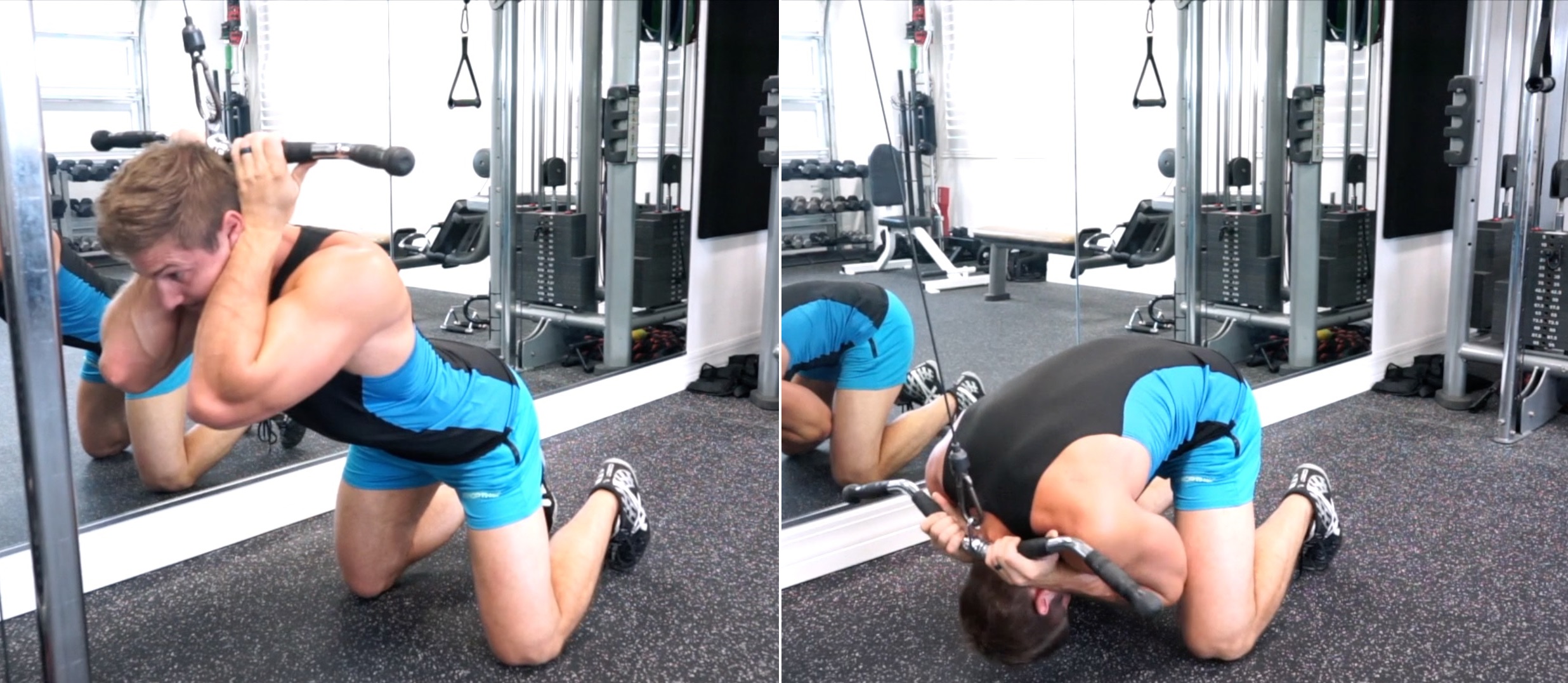
Full extension at the top and full spinal flexion at the bottom is key to building blocky abs. Just make sure not to bend too much at the hips during the movement or else it becomes a hip flexor exercise and you don’t want that!
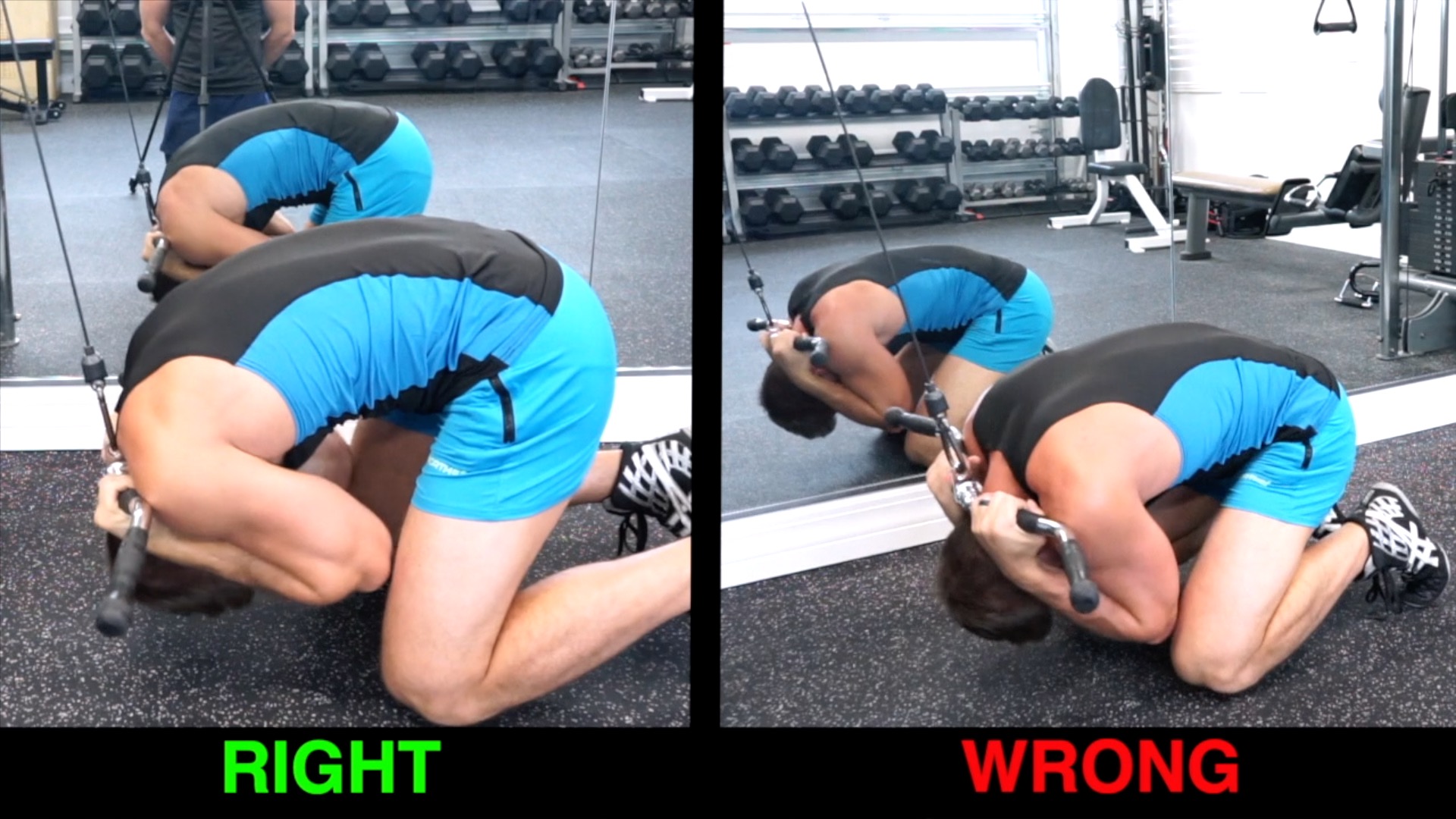
#7 – The Shoulder Press
Alright, so the last exercise is the Shoulder Press! You can use a barbell or dumbbells, you can do it seated or standing, it really doesn’t matter. As long as I see some weight going up and down over your head, I’m good!
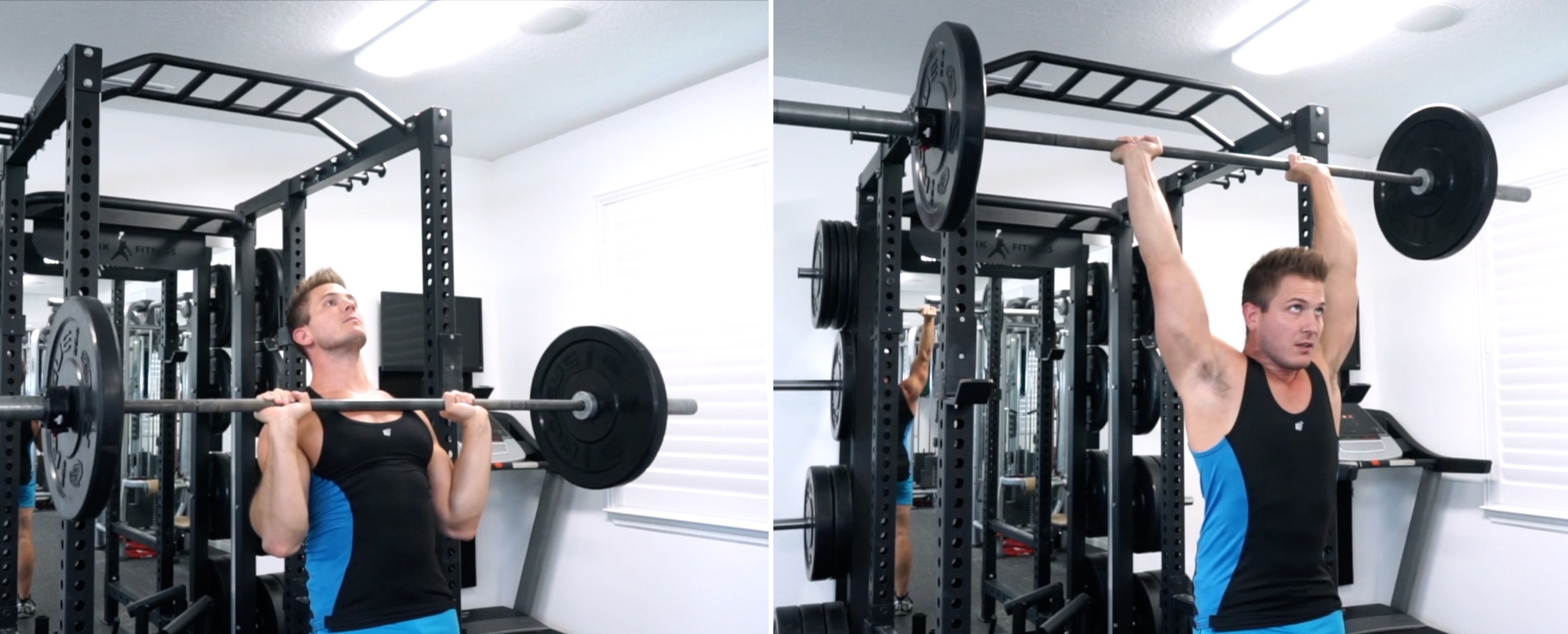
Personally, my favorite shoulder press variation is the standing barbell press because if I am trying to bust out a few extra reps or more weight, I have the option to push-press through the concentric phase of the movement. Now, I have made a video in the past comparing the barbell to dumbbell shoulder press and actually found out some interesting facts like how a STANDING DB PRESS can activate more rear delts, so if you want to learn more just click the link to this video HERE.
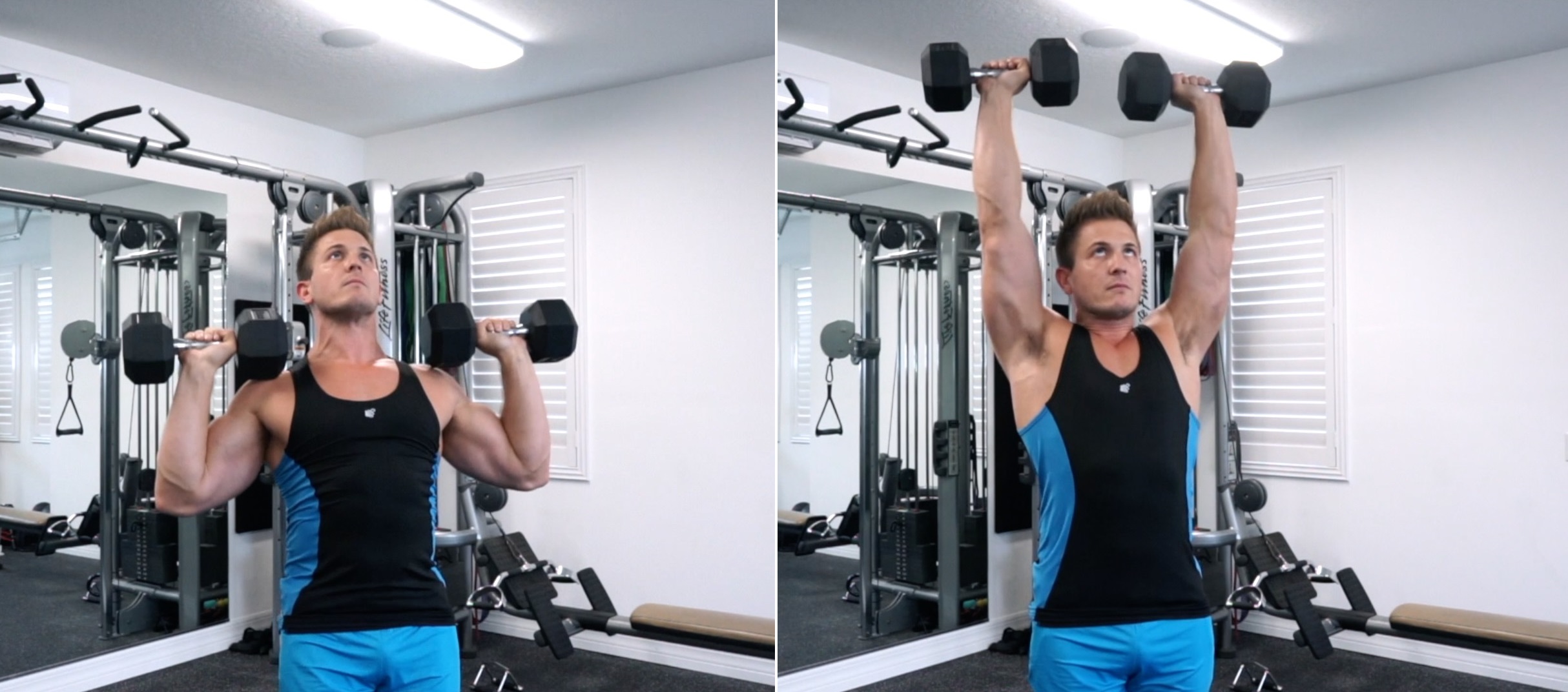
Now, if you’re experiencing shoulder pain from dumbbell or barbell shoulder pressing, I do have a solution for you and that is a landmine press. Placing your elbows in front of your body is your shoulders preferred anatomical position to press from and that is exactly the position the landmine press forces you into so give it a try during your next workout!
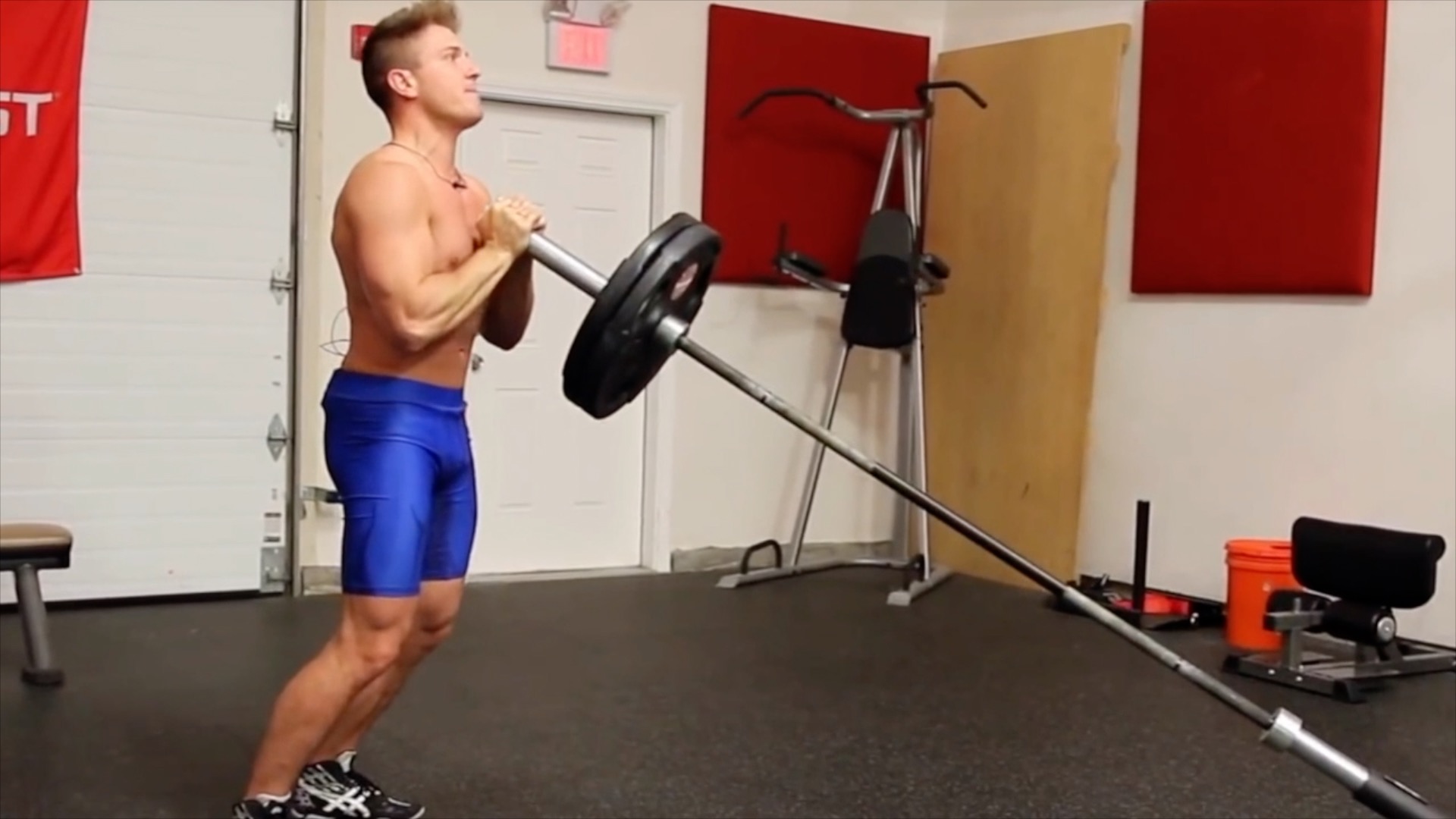
BONUS TIP!
But one final tip before I let you go. USE FULL RANGE OF MOTION ON EVERY EXERCISE! PERIOD. You will always have weakness where you don’t train and poor flexibility is NO EXCUSE. Always do your best to increase your flexibility and adjust how much weight you’re lifting so that you can perform every exercise as best as you can until you have full range of motion.
The only people who say half reps or partial reps keep more “tension” on your muscles for growth are your typical fake natty pieces of trash. They don’t care about you. They just want your money and views. I’m different. I want your money AND for you to make GAAAAAAAINS!
But seriously, 10 years strong on YouTube and that big ol’ GOLD button on the wall in my gym reminds me every day why I am making these articles and it’s because you are all counting on me to lead you in the right direction.
Conclusion
One last thing. SETS & REPS! Now, what you should do for each exercise depends on the structure of your entire program. But a safe place to start would be 7 – 8 sets of 6 – 8 reps for each exercise when incorporated into your workout and if you need a bit more guidance, you can join here on the site as a PLATINUM+ member and post in my members only section of my forums and I’ll personally respond to your questions within 24 – 48 hours!








